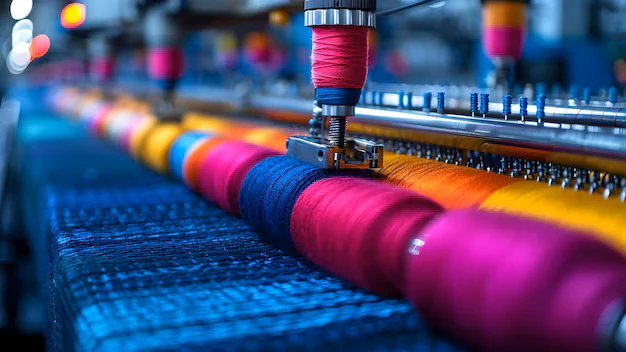The global textile trading industry, valued at a staggering USD 800 billion, continues to be a vital pillar of international commerce. India, a key player in this sector, currently contributes USD 35 billion annually in exports. Now, the country has set its sights on an ambitious goal: increasing textile exports to USD 100 billion by 2030.
This bold vision, outlined by the Indian government, targets a remarkable 19 per cent compound annual growth rate (CAGR) over the next six years. To achieve this target, the industry will require investments of approximately Rs 200,000 crore and is expected to generate employment for three million people.
Historically, India’s textile industry experienced robust growth, achieving a 9 per cent CAGR between 2001 and 2014. However, the past decade has been challenging, marked by stagnation due to the expiration of the European Union (EU) trade treaty, disruptions from the COVID-19 pandemic, and high channel inventories.
Despite these hurdles, the 2030 export target is within reach, thanks to evolving global dynamics and strategic initiatives. The “China plus one” strategy, adopted by international businesses to diversify supply chains, is creating opportunities for India. Government-led efforts, such as Production-Linked Incentive (PLI) schemes and ongoing Free Trade Agreement (FTA) negotiations with the EU and the UK, are expected to further bolster the industry’s competitiveness.
Geopolitical tensions and rising labor costs in China have prompted global brands to explore alternatives, positioning India as an attractive option. While Bangladesh remains a formidable competitor due to its low production costs, India’s established textile ecosystem and government support offer significant advantages. Additionally, Bangladesh’s political instability further strengthens India’s appeal as a reliable partner.
India’s garmenting and home textile sectors are poised to lead this transformation, benefiting from global retailers’ efforts to diversify supply sources. Meanwhile, technical textiles—used in healthcare, industrial applications, and protective gear—are experiencing growing demand, providing additional growth avenues.
Consolidation within the Indian textile industry is also playing a crucial role. Larger manufacturers, leveraging economies of scale, are securing significant contracts from multinational retailers, further cementing India’s position in the global market.
Negotiations for FTAs with the EU and UK could prove transformative by reducing import duties and unlocking new markets for Indian textiles. Concurrently, the government’s PLI schemes are incentivizing investments and enhancing the sector’s global competitiveness.
With a strategic focus on value-added segments, innovative production practices, and favorable trade policies, India’s textile industry is on the brink of a transformative decade. If successful, the sector promises substantial economic growth and employment opportunities, reaffirming its role as a cornerstone of India’s global trade ambitions.

